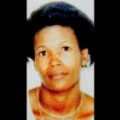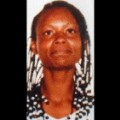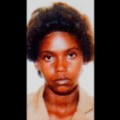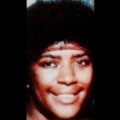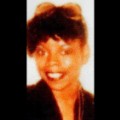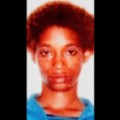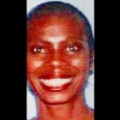Jurors Watch Video of Detectives Interrogating Serial Killer Lonnie Franklin Jr.
The "Grim Sleeper" brutally killed 10 women before he was caught.
Lonnie Franklin Jr., the serial murderer known as the "Grimp Sleeper," has been on trial since February 16 for the murder of 10 women between the years of 1988 and 2002 in Los Angeles. This week, the jury got their first glimpse at seeing the killer speak.
Jurors were shown videotapes in which two LAPD detectives interviewed Franklin about the murders soon after he was apprehended. In the video, Franklin denied knowing any of the victims, despite the fact that his DNA was connected to all of them. "You've never seen that girl before?" one detective asked, raising a picture of victim Janecia Peters. "I know a lot of people, but I don't know her," Franklin replied. "I haven't killed anybody."
The video is a major aspect of the prosecutors' case, which also includes DNA and ballistics that connect Franklin to the women, which they hope will prove he's a sociopathic liar.
The major pieces of evidence include a slice of pizza that Franklin has discarded that matched genetic material found at some of the killing sites, a .25-caliber semiautomatic handgun, which two criminalists have testified was the gun used to shoot Peters, and the greatest piece of evidence in the case: the lone woman who survived one of Franklin's alleged attacks, Enitra Washington. Washington testified earlier in the trial that Franklin was the man who shot her back in 1988.
"You know what the news calls you?," former LAPD detective Dennis Kilcoyne said. "I know damned well you know."
"The Reaper?" Franklin said.
"The Grim Sleeper," Kilcoyne corrected.
Reactions to the hour-long interrogation video of Lonnie Franklin, Jr.
The case has left many wondering why, despite plenty of evidence and even a witness, Franklin was able to kill for nearly 15 years before he was caught. Did it have to do with the fact that most of his victims were Black women? Franklin has pled not guilty to the case, but the mountain of evidence against him makes it unlikely he'll be found so.
Jurors were shown videotapes in which two LAPD detectives interviewed Franklin about the murders soon after he was apprehended. In the video, Franklin denied knowing any of the victims, despite the fact that his DNA was connected to all of them. "You've never seen that girl before?" one detective asked, raising a picture of victim Janecia Peters. "I know a lot of people, but I don't know her," Franklin replied. "I haven't killed anybody."
The video is a major aspect of the prosecutors' case, which also includes DNA and ballistics that connect Franklin to the women, which they hope will prove he's a sociopathic liar.
The major pieces of evidence include a slice of pizza that Franklin has discarded that matched genetic material found at some of the killing sites, a .25-caliber semiautomatic handgun, which two criminalists have testified was the gun used to shoot Peters, and the greatest piece of evidence in the case: the lone woman who survived one of Franklin's alleged attacks, Enitra Washington. Washington testified earlier in the trial that Franklin was the man who shot her back in 1988.
"You know what the news calls you?," former LAPD detective Dennis Kilcoyne said. "I know damned well you know."
"The Reaper?" Franklin said.
"The Grim Sleeper," Kilcoyne corrected.
Reactions to the hour-long interrogation video of Lonnie Franklin, Jr.
The case has left many wondering why, despite plenty of evidence and even a witness, Franklin was able to kill for nearly 15 years before he was caught. Did it have to do with the fact that most of his victims were Black women? Franklin has pled not guilty to the case, but the mountain of evidence against him makes it unlikely he'll be found so.
Below is a report from the courthouse reporter and a relative watching the video. I tried to get the actual video, but was unable, although this shows sketches.
Reports from the courthouse about the video and Franklin's reaction
Kilcoyne eventually told Franklin that the DNA "only connects to one person in the world. That's only Mr. Lonnie Franklin who has the DNA make-up that's found on those young ladies right there. So, how in God's name is that possible?''
"I don't know,'' Franklin responded.
When shown a photo of 34-year-old Henrietta Wright, whose body was discovered in an alley in August 1986, Franklin responded that she looked "butt ugly.'' He denied knowing her.
When shown a photo of Bernita Sparks, who was found dead in a trash bin in April 1987, Franklin said that she looked "fat.''
"It's not like we picked your name out of a hat,'' Coulter told the defendant. "It's all linked to you.''
Franklin again responded, "I don't know these people.''
Kilcoyne told Franklin that "the science has caught up with you'' and urged him to "man up'' to what he had done.
When asked how he could explain why his DNA was linked with the victims, Franklin responded, "I can't explain it.''
"It's not me,'' he said, when Kilcoyne said he and his fellow detectives were "having a chat with the Grim Sleeper.''
"How did your DNA juice get on these bodies?'' Kilcoyne asked.
"I don't know,'' Franklin responded.
He maintained that he didn't kill anybody and reiterated that he didn't know any of the women and was going to have to get an attorney.
Police detectives then told him that he was going to be arrested on suspicion of 10 counts of murder and one count of attempted murder before asking him to swab the inside of his cheeks and leading him out of the room — apparently in handcuffs.
The nearly hourlong videotaped interview was shown to jurors as the prosecution nears the end of its case-in-chief against Franklin.
The prosecution is expected to rest its case Wednesday after calling members of the victims' families to the stand to identify the victims and to testify that none of their families are related to Franklin's family.
One of Franklin's attorneys, Seymour Amster, said the defense was reserving its opening statement until beginning its portion of the case.
In her opening statement last month, Deputy District Attorney Beth Silverman told jurors that DNA and firearms evidence linked Franklin to the attacks.
"The evidence in this case will tell a story, a story of a serial killer who stalked the streets of South Los Angeles, a serial killer who is responsible for the murders of 10 women'' and the attempted murder of another woman, the prosecutor told jurors.
The killings occurred between 1985 and 1988, and 2002 and 2007, with the assailant dubbed the "Grim Sleeper'' because of the apparent 13-year break in the killings.
Most of the victims were shot in the chest or strangled, Silverman said.
The prosecutor said all of the victims were "connected to the same serial killer'' either through DNA evidence or firearms evidence.
"And that serial killer, ladies and gentlemen, is the defendant Lonnie Franklin,'' Silverman told the jury.
Eight of the victims were linked through firearms evidence, and DNA collected from seven of the victims was linked to the same male profile, she said, noting that the male profile was matched to "the defendant's unique DNA profile'' during an LAPD task force investigation into the killings.
Along with the shooting deaths of Wright and Sparks, Franklin is charged with murdering:
-- Debra Jackson, 29, who was found dead from three gunshot wounds to the chest in an alley on Aug. 10, 1985;
-- Barbara Ware, 23, who was shot once in the chest and found dead in an alley on Jan. 10, 1987;
-- Mary Lowe, 26, who was shot in the chest and found dead in an alley on Nov. 1, 1987;
-- Lachrica Jefferson, 22, who was found dead from two gunshot wounds to the chest in an alley on Jan. 30, 1988;
-- Alicia Alexander, 18, who was killed by a gunshot wound to the chest and found in an alley on Sept. 11, 1988;
-- Princess Berthomieux, 15, who was strangled and discovered in an alley in Inglewood on March 19, 2002;
-- Valerie McCorvey, 35, who was strangled with a ligature and found dead at the entrance to an alley on July 11, 2003; and
— Janecia Peters, 25, who was shot in the back and found dead inside a sealed plastic trash bag in a trash bin in an alley on Jan. 1, 2007.
-- Barbara Ware, 23, who was shot once in the chest and found dead in an alley on Jan. 10, 1987;
-- Mary Lowe, 26, who was shot in the chest and found dead in an alley on Nov. 1, 1987;
-- Lachrica Jefferson, 22, who was found dead from two gunshot wounds to the chest in an alley on Jan. 30, 1988;
-- Alicia Alexander, 18, who was killed by a gunshot wound to the chest and found in an alley on Sept. 11, 1988;
-- Princess Berthomieux, 15, who was strangled and discovered in an alley in Inglewood on March 19, 2002;
-- Valerie McCorvey, 35, who was strangled with a ligature and found dead at the entrance to an alley on July 11, 2003; and
— Janecia Peters, 25, who was shot in the back and found dead inside a sealed plastic trash bag in a trash bin in an alley on Jan. 1, 2007.
Authorities said after Franklin's arrest that he was identified as a suspect using familial DNA — investigators determined that his son had DNA similar to the killer, and when they subsequently got Franklin's DNA, his genetic material allegedly matched forensic evidence from eight killings between 1985 and 1988, and three killings between 2001 and 2007.
Detectives have said since Franklin was taken into custody that they were also investigating whether he might be connected to the disappearances or deaths of eight other women whose photos were found in his home near 81st Street and Harvard Boulevard.
Reactions to the Video
















